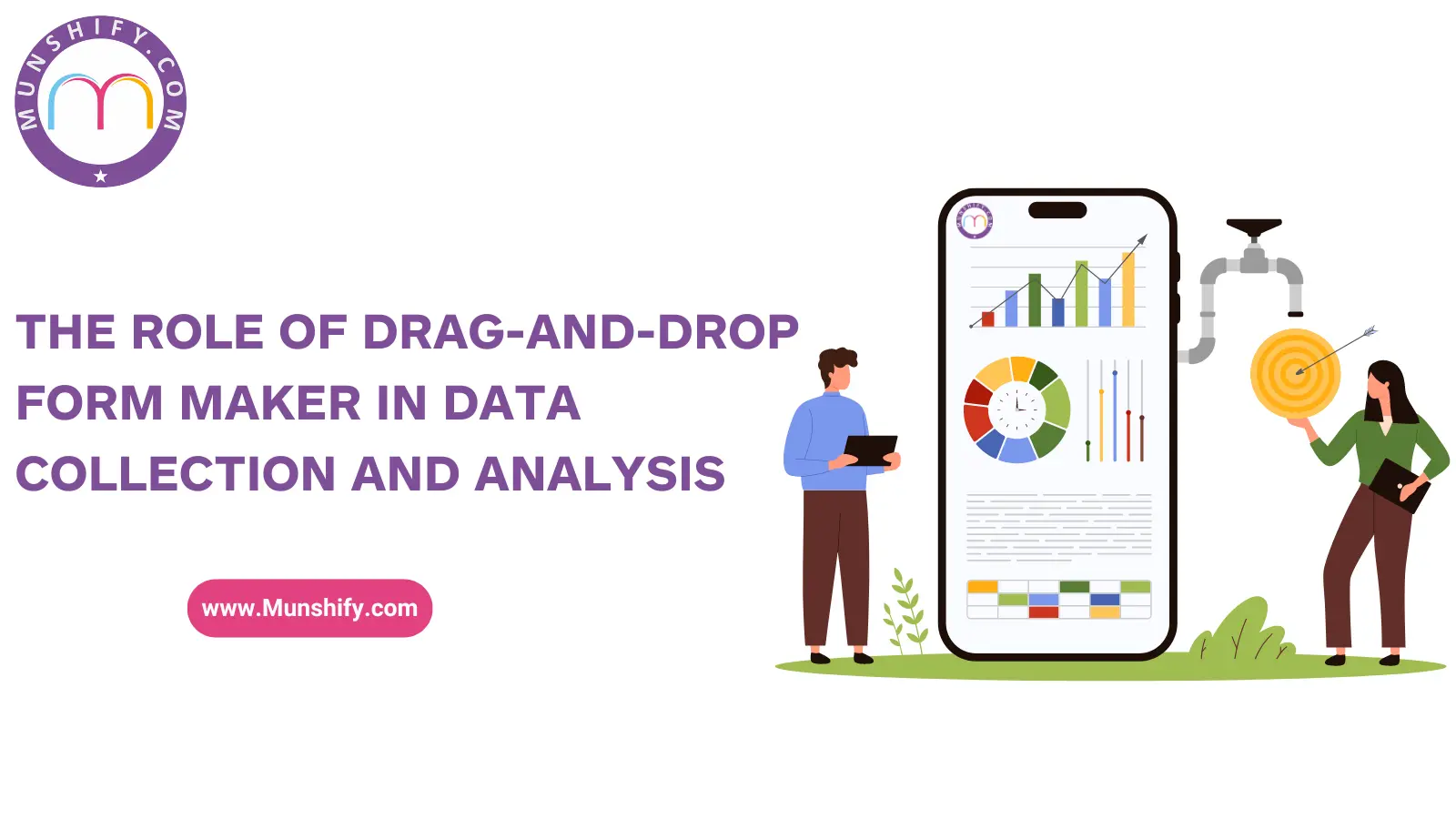In the digital age, data collection and analysis have become essential components for businesses, educational institutions, and various organizations. The efficiency of these processes can significantly impact decision-making and overall productivity. One tool that has revolutionized how we gather and analyze data is the drag-and-drop form maker. In this blog post, we will explore the role of drag-and-drop form creators in data collection and analysis, highlighting their benefits and real-world applications.
Table of Contents
1. Understanding Drag-and-Drop Form Maker
2. Benefits of Drag-and-Drop Form Maker
3. Data Collection Simplified
4. Advanced Data Analysis
Understanding Drag-and-Drop Form Maker
Drag-and-drop form maker is a user-friendly tools designed to simplify the creation of forms. These tools allow users to create forms without needing any coding knowledge. By simply dragging and dropping form elements like text fields, checkboxes, and radio buttons, form creator can customize forms to meet specific needs. This ease of use makes drag-and-drop form builder accessible to a wide range of users, from tech-savvy individuals to those with minimal technical expertise.
Benefits of Drag-and-Drop Form Maker
The primary advantage of using a form maker lies in its simplicity and efficiency. Traditional form creation methods often required extensive coding knowledge and time-consuming processes. In contrast, drag-and-drop form creator streamline this process, saving time and resources. Moreover, these tools offer various customization options, allowing forms to be tailored to specific requirements. This flexibility ensures that the collected data is relevant and useful for analysis.
1. User-Friendly Interface
The user-friendly interface of drag-and-drop form maker eliminates the need for specialized training. Anyone with basic computer skills can create and manage forms. This democratization of form creation empowers individuals and teams to take charge of their data collection processes.
2. Time and Cost Efficiency
Traditional form creation can be a lengthy and costly process, especially if external developers are hired. Drag-and-drop form builder reduces these costs by enabling users to create forms quickly and efficiently. The time saved can be redirected towards other important tasks, increasing overall productivity.
3. Customization and Flexibility
Customization is a key feature of drag-and-drop form maker. Users can easily add or remove form elements, change the layout, and incorporate branding elements. This flexibility ensures that the forms align with the specific needs and aesthetics of the organization.
Data Collection Simplified
1. Improved User Experience
A significant advantage of using a drag-and-drop form maker is the improved user experience. Forms designed with these tools are typically more intuitive and visually appealing, which encourages respondents to complete them.
2. Versatile Data Collection
Drag-and-drop form builder allows for versatile data collection. Forms can include various types of questions, such as multiple-choice, rating scales, and open-ended questions. This versatility enables the collection of different types of data, providing a more comprehensive understanding of the subject being studied.
3. Automated Data Entry
Another advantage is automated data entry. As respondents fill out the forms, their responses are automatically recorded and stored in a database. This automation reduces the risk of human error during data entry and ensures that data is available for analysis immediately after collection.
4. Mobile Compatibility
Many drag-and-drop form maker is mobile-compatible, meaning forms can be filled out on smartphones and tablets. This compatibility increases the convenience for respondents, leading to higher response rates. It also enables data collection in various environments, such as field surveys.
Advanced Data Analysis
1. Centralized Data Storage
With drag-and-drop online form creator, all collected data is stored centrally. This centralized storage makes it easier to manage and access data. Users can quickly retrieve and organize data, streamlining the analysis process.
2. Enhanced Collaboration
Multiple team members can access and work on the same data simultaneously. Features like shared dashboards and collaborative editing ensure that everyone is on the same page, improving the efficiency and accuracy of data analysis.
3. Advanced Filtering and Segmentation
Advanced filtering and segmentation features allow users to drill down into the data. These features enable the isolation of specific data subsets, which is useful for detailed analysis. For example, responses can be filtered by date, respondent demographics, or specific answers.
4. Predictive Analytics Integration
Some form makers integrate with predictive analytics tools. This integration allows users to leverage machine learning algorithms to forecast trends and outcomes based on the collected data. Predictive analytics can provide valuable insights that inform strategic decision-making.
5. Data Visualization
Data visualization tools integrated with Online form maker help transform raw data into understandable and actionable insights. Charts, graphs, and other visual aids make it easier to identify patterns and trends. Effective visualization aids in communicating findings to stakeholders who may not be familiar with the data.
6. Real-time Alerts and Notifications
Real-time alerts and notifications keep users informed about new data submissions and significant changes in the data. This immediate awareness allows for timely actions and decisions. For instance, if a survey reaches a critical threshold, survey maker can instantly notify stakeholders to take appropriate measures.
7. Longitudinal Data Collection
For projects requiring data collection over time, drag-and-drop form maker can facilitate longitudinal studies. One can easily implement repeated measures and compare data from different time points to identify trends and changes over time.
The advantages of drag-and-drop form creator in data collection and analysis are numerous and significant. They not only simplify and streamline the data collection process but also enhance the accuracy, efficiency, and depth of data analysis. From improved user experience and versatile data collection to advanced filtering, segmentation, and predictive analytics integration, these tools provide comprehensive solutions for modern data needs. By leveraging the capabilities of drag-and-drop form maker, organizations can unlock powerful insights and drive informed decision-making.
Transform your data processes with Munshify Forms! Enjoy a 14-day free trial and experience the ease of our drag-and-drop form maker. Start today and see the difference for yourself!


